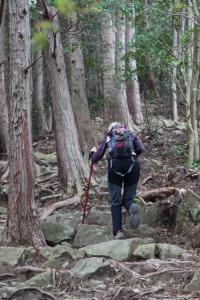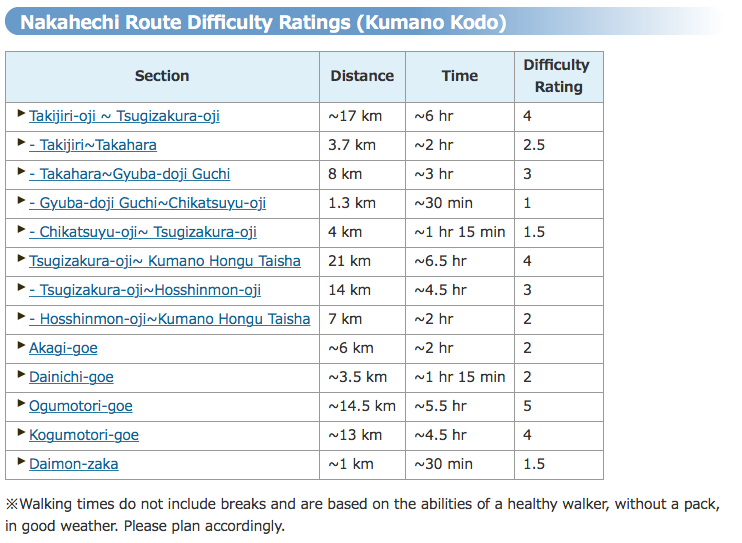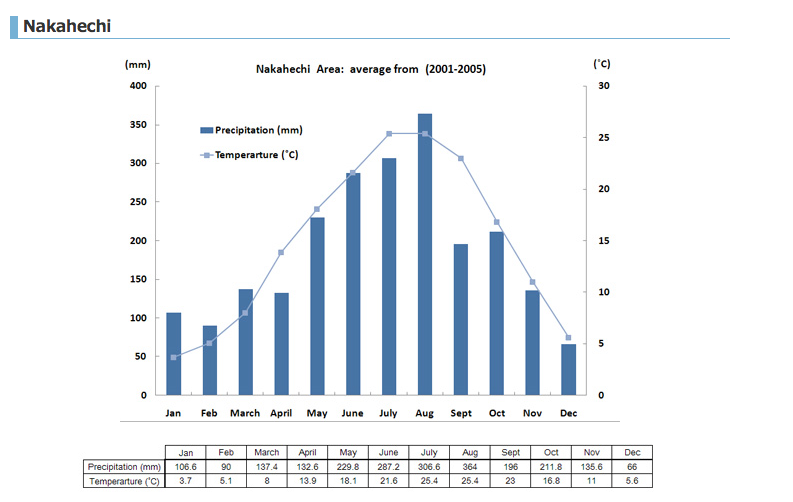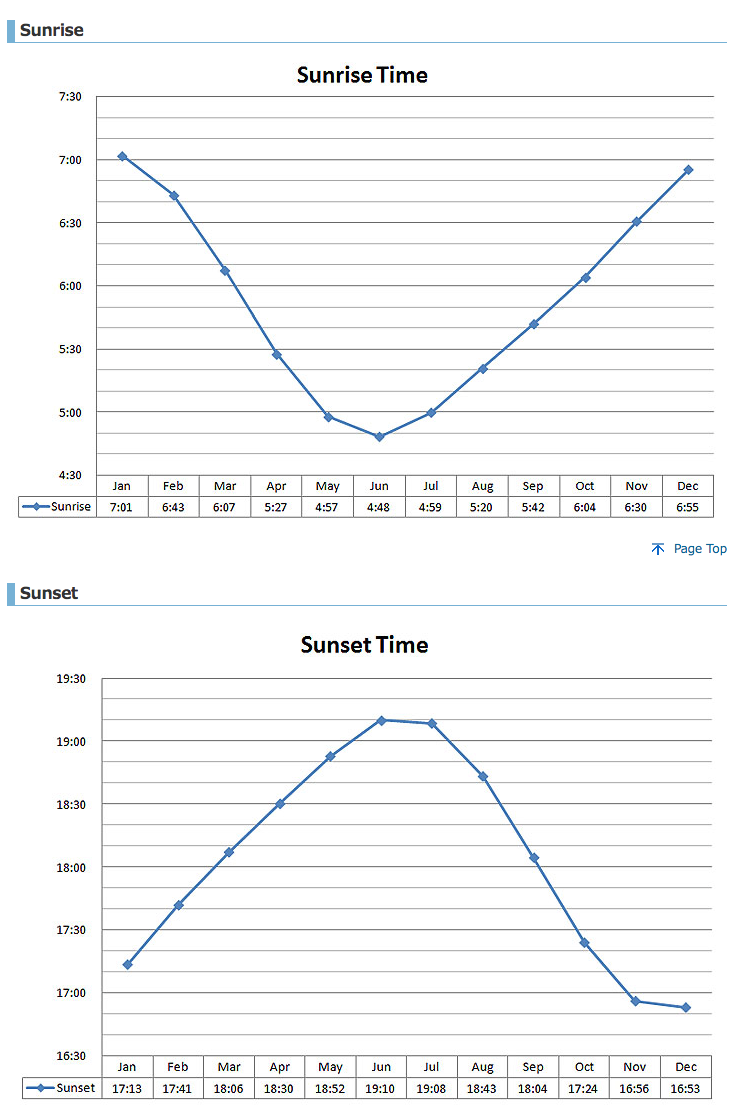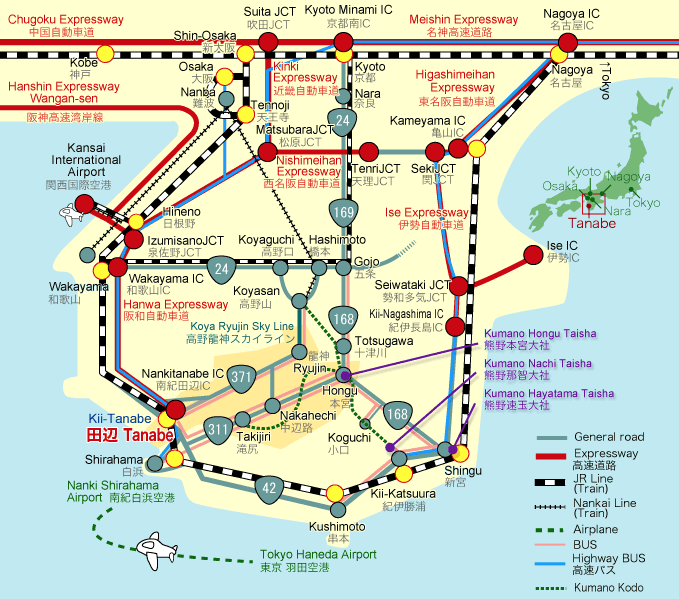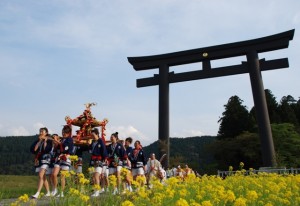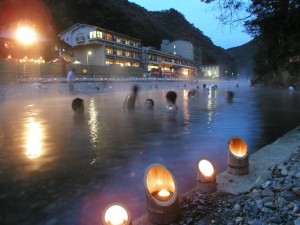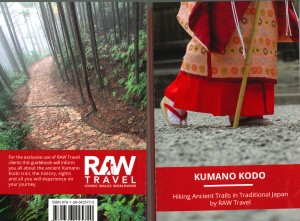FAQ's
All the stuff that's good to know!
Click on a question below to expand and see answers or our destination guide
General
The Kumano Kodo is extremely well signposted with wooden “Kumano Kodo” signs – there are even “Not Kumano Kodo” signs on some crossroads indicating where not to go! In addition to the Kumano Kodo signs, there are waymarkers as well as regular signs indicating directions and distances. Thus, it is very unlikely that you will get lost.
Most Japanese people you will encounter in the accommodations may not speak fluent English but they can generally understand at least a few basic words in English and usually, communication is not a problem.
Japanese people are very helpful and good at anticipating guests needs, so they can usually understand most basic requests even if they don’t speak English themselves.
The daily distances average around 14-17km, with some days even longer than that. Distances can be deceptive on the Kumano Kodo as although it may not be far on paper the hours walked give you a better indication of effort required. Distances walked are really determined by where your accommodation is. On the first day on the Nakahechi trail you could walk 4km uphill to Takahara for instance or if you set off in the morning you can continue onto Chikatsuyu or Tsugizakura and make it a 15-18km day.
The Kii-Peninsula is an exceptionally mountainous region, with range after range of hills. Underfoot you will experience a variety of tracks and trails on the Kumano Kodo. The majority of the trail is in forested mountains and includes a number of steep ascents and descents on each walking day. This is a rugged trail and underfoot you will find exposed tree roots, loose rocks and stone steps which can be very slippery, particularly if it has been raining. There are also a few short sections of country lanes and gravel roads, mainly when coming into the towns.
You will always be following the Kumano Kodo waymarkers and it is a well signed and well-defined track.
Paths vary from beautiful stone flagged sections to gnarly tree root covered sections of bare earth. Generally speaking though the paths are very good and easy to follow on the Nakahechi route.
The highest point you will walk to on the Nakahechi route is 868m along the Ogumotori-goe section (Koguchi to Kumano Nachi Taisha).
We have been running active trips worldwide for 16 years and specialise in walking and cycling groups to many destinations worldwide, particularly Asia where we’ve run more active trips than anywhere else.
We enjoy providing a friendly, personal service where you’re treated as an individual (no call centres here!). Being specialists allows us to deliver you a level of care and experience that comes from being focused. We pride ourselves on our staff’s intimate knowledge of our destinations and several of us have hiked the Kumano Kodo – so you’ll talk to people with firsthand experience.
The Nakahechi route is a walk suitable for fit and experienced hikers, it is not a route recommended for people without any hiking experience and suitable equipment. You can tailor your walk to avoid some of the more strenuous walks and just tackle easier sections but if you want to walk the whole thing then you definitely need to train and have a good level of fitness. Although the route does not go to great heights like some mountain walks it is easy to underestimate the difficulty and effort required – certainly many people are surprised when they get to the Kumano Kodo.
Difficulty ratings
1 being easy and 5 being difficult
Difficulty Ranking 1:
- Short distance
- Minimal time to walk
- Minimal elevation gain and descent
- Easy terrain e.g. pavement or well-maintained trail
- Very accessible e.g. bus stops are nearby
- Settled area e.g. people live along the trail or nearby
※ These walks are appropriate for the casual walker.
Difficult Ranking 5:
- Long distance
- Full day walk
- Steep elevation gain and descent
- Difficult terrain eg. roots, steep uneven staircases, etc.
- Limited accessibility
- Remote area
※ These walks are appropriate for the prepared, experienced walker in good physical condition.
Difficulty ratings can be very subjective and also open to variables such as the weather on any given day. There are many variables that can change the difficulty of the route including;
- Weather
- Time of day
- Time of year
- Direction routes are walked
- Amount of luggage being carried
- Physical condition and experience of walker
For example, if it is raining very hard, you are carrying a large backpack, and are feeling fatigued, a 3 ranked course can easily become a difficulty of 5.
Note: This does not mean that all routes that are ranked 5 have no bus access, etc. Other criteria may play a more important role in ranking
The following table of distances and information on difficulty ratings have been taken from Tanabe City Tourism’s information – all rights reserved to them:
The best time to trek the Kumano Kodo really depends on what you like and what you are looking for. The Kumano Kodo trail can be walked year round but the weather does vary quite dramatically depending on when you go.
March / April is spring and an extremely popular time to go as it is cherry blossom season in Japan. October / November is also a popular time to visit as it is autumn and the colours throughout the forest are stunning. In spring and autumn, you can expect daytime temperatures of around 10-15C. May and September are also lovely months to visit with warmer and longer days – daytime temperatures range between 18-24C. June / July / August is summer so you can expect more humidity and higher rainfall but on the other hand the scenery is beautifully green and verdant. August and September are the peak months of the Typhoon season and you risk potential disruption to your travel plans (particularly walking) if one of these extreme weather events occurs during your visit.
During summer you can expect up to 25-30C in temperature and high humidity. December / January / February is winter and there is a small chance of snow on the Nakahechi route. Trails are open year round but due to the cool weather and reduced hours of daylight we recommend this time of year for experienced trekkers only. Most accommodations close during the Christmas and New Year’s holiday period.
Kii-Peninsula is one of the wettest areas of mainland Japan and you should always be prepared for some rain year round and bring adequate rain gear.
Information graphs sourced from http://www2.tb-kumano.jp, all rights reserved to Tanabe city Tourism.
Insurance
If you are travelling on any trip with RAW Travel you will require travel insurance and it is strongly recommended for all travellers. There is no reciprocal health agreement between Japan and Australia so you will be responsible for all hospital and other medical charges you incur. Get that insurance!
Check out the link below for a full list of medical facilities in Japan, which are generally of a very high standard:
http://www.australia.or.jp/embassy/en/consular/medical/
Travelling
To reach Kii-Tanabe / Kii-Katsuura rail is the most practical option and the coastal line connects Kansai airport / Osaka in one direction and Nagoya in the other with the Kii-Peninsula.
Along the Nakahechi trail, local buses are the best means of getting around. There is a bus service running from Kii-Tanabe to Takijiri-oji (entrance to the Nakahechi route) that continues all the way to the Hongu area. Koguchi is also served by a bus that connects the Hongu area with Shingu. In addition, there are several other local bus routes running.
On the Kohechi route transport is much more limited and confined to Koyasan and Totsugawa stops and Kumano Hongu.
Tanabe City Tourism
Please check out our Getting there & Transport page for more detailed information
Requirements
Hiking boots are the best choice for the Kumano Kodo. A good fitting, well worn in hiking boot will keep your feet dry in wet and muddy conditions, protect your toes when walking over rough rocky ground and give you good stability – these factors make a lightweight, waterproof hiking boot the best choice. Vibram soles are highly recommended and becoming a common choice of material among boot makers.
Walking poles are highly recommended for this trek. Underfoot you will experience a variety of tracks and trails on the Kumano Kodo, including slippery, rocky and steep sections, and walking poles are great for balance and taking weight off your knees on descents. If you are accustomed to walking with poles and have a pair of your own then you can take them with you but do remember to pack them as part of your main luggage. If you have not walked with poles before but plan to do so we strongly recommend that you practice walking with them prior to starting your trip.
Nationals of Australia, New Zealand, most EU countries, the USA, Canada, Switzerland and some other countries only need their passport and a return ticket to enter Japan as a tourist. You will be stamped in on arrival at the airport.
As of 1 December 1998, Australians travelling with a valid Australian passport no longer need a visa if their purpose of travel to Japan is for the above activities and the proposed period of stay is no more than 90 days. The Australian passport must remain valid during the period of the stay but there is no minimum period of validity required.
For reference and unto date visa requirements please see the list below:
Embassy of Japan in New Zealand![]()
Walking the Kumano Kodo is similar to preparing for any multi-day walk, with the exception that your wet weather gear may be needed more frequently!
– Blister kit, rehydration salts, first aid kit, any personal medication you use and mosquito repellant
– Alarm clock and LED head torch/flashlight
– Water bottles or hydration pack (1-2 litres recommended)
– Sunscreen, hat and high UV sunglasses
– Comfortable daypack (if taking luggage transfers on RAW Travel trip)
– Waterproof bags for rain protection while walking
– Well worn in boots with ankle support
– Several pairs of walking socks
– T-shirts (lightweight quick drying tec fabric) or long sleeved trekking shirts
– 2 pairs of shorts and at least one lightweight trousers
– Warm fleece, sweater, hat, gloves (colder months of Feb- March, October- November)
– Waterproof & breathable jacket and overtrousers – essential as this is the wettest part of Japan
– Walking poles – good for balance, stability & taking weight off your knees on descents
– Snacks that you’d normally bring on a hike
Special Events
Information on this page taken from Tanabe City Tourism
New Year
New Years’ festivities are held throughout Japan during the first days of January. Experiencing the festive atmosphere at the Kumano Sanzan shrines is a unique way to bring in the new year.
Kumano Hongu Taisha Spring Festival | April 13th to 15th
This annual festival of Kumano Hongu Taisha takes place from April 13th to 15th. The 13th consists of a purification bath of father and son in Yunomine Onsen before walking on the Kumano Kodo pilgrimage route to Oyunohara. The 15th consists of a procession, carrying of the portable shrine, fire ceremony and other events.
Nanakoshi Festival | April 29th
 Nanakoshi festival takes place on April 29 (Showa Day). Nanakoshi is the ridge across the Kumano-gawa River from Oyunohara. Small local festival dedicated to the deites enshrined along the ancient training route called Omine Okugake-michi.
Nanakoshi festival takes place on April 29 (Showa Day). Nanakoshi is the ridge across the Kumano-gawa River from Oyunohara. Small local festival dedicated to the deites enshrined along the ancient training route called Omine Okugake-michi.
Nachi-no-Hi Matsuri Fire Festival | July 14th
The main festival of the Nachi shrine, it takes place on July 14 at the base of this magnificent falls. It is a fire festival in which 6 meter high portable shrines symbolically representing the waterfall are purified with the fires from oversized torches laboriously carried by men dressed in white.
Tanabe festival | July 24th to 25th
A parade of floats takes place during this festival, as well as a demonstration of horseback archery by young boys wearing typical Edo period costumes. Takes place around Tokei-jinja shrine on July 24 and 25.
Kumano Kodo Kiyohime festival | last Sunday of July
Re-enactment of the legend of Anchin and Kiyohime taking place on the last Sunday of July, in Nakahechi. Kiyohime, having been betrayed by the man she loved (Anchin), turned into a dragon and, in her rage, bursts into flames thus killing herself and Anchin.
Yata Fire Festival | last Saturday of month August
Festival taking place on the last Saturday of August, in Oyunohara (Hongu-cho), in honnor of the Yatagarasu crow. This fire festival includes the parading of a fire mikoshi, a Taiko drum show, dancing, and fireworks.
Benkei Festival | first weekend October
Taking place at the Ogigahama beach, this festival offers different shows and concerts, including a play re-enacting Benkei’s story. Benkei was a warrior monk who died protecting his master against a vast army. The year’s biggest fireworks take place during this festival.
Kumano Kodo picture scroll procession | 3rd November
Re-enactment of the Imperial pilgrimage procession, with traditional costumes, taking place in the Takahara area, Nakahechi-cho, on November 3.
Lion dance of Nonaka | 3rd November
Traditional dance with a lion costume, near Nonaka-no-Ipposugi (Tsugizakura-oji) on November 3.
Shoryu (Rising dragon) Festival | third Saturday and Sunday November
Farmer’s market in Ryujin, involving chainsaw art presentaions, on the third Saturday and Sunday of November.
Opening of Sennin-buro bath | 1st December
Giant outdoor bath dug out of the bed of the Kawayu river in Kawayu Onsen. Open from December 1st to the end of February.
the video below show various festivals around Japan:
Resources
For a wonderful overview of the Kumano please see the video embedded on our Nakahechi route page
For a video in English on the Iseji route please see our page on Iseji
For a video in English on the Kohechi route please see our page on Kohechi
Fore more videos that show what’s it’s like to walk the Kumano Kodo please follow the links below:
https://www.youtube.com/watch?v=Vedey_4XCVE
https://www.youtube.com/watch?v=TPE6lkRo9Ng
Jetstar magazine has just published an article in it’s April edition profiling the walk:
For a good overview of the Kumano Kodo see this online article on CNN”s website:
http://edition.cnn.com/2013/05/06/travel/japan-kumano-kodo-hike/
The Daily Telegraph in the UK also sent a journalist to walk the Trail and their article can be found on this link
The Spiritual Pilgrimages site links the Camino de Santiago in Spain with the Kumano Kodo, as both share a 1000 year tradition of Pilgrims and were twinned as UNESCO world heritage walks – the only 2 in the world.
http://www.spiritual-pilgrimages.com/en/kumano-kodo
Yes if you read Japanese! The only good English language information book for the Kumano Kodo is one compiled by RAW travel and given to it’s self guided walkers, see below:
The Kumano Kodo is still a fairly uncommercialized walk, hence the lack of published English language materials.
The wonderful Tanabe City Tourism pamphlet of Pilgrimage Route maps (pictured below) is the best available guide in English. RAW Travel clients are provided these , also you can pick them up at the office of Tanabe City Tourism outside the Kii-Tanabe rail station or at the Visitor information Centre in Hongu. They may be available elsewhere in Japan but these two locations are fairly reliable.

Lonely Planet and Rough Guides both include a brief mentions on walking the Kumano Kodo but the information given locally is far more detailed.
Click here to see detailed route maps for each day on the Nakahechi route taken from the above pamphlet.
Food
What is the food like on the Kumano Kodo?
In short wonderful, if you like Japanese Food! It is important to understand that the food a highlight of travelling in Japan but you will only be served Japanese Food on this trip there is no alternatives available in the small accommodations you stay at. For more detail on what you can expect each day see our page on Japanese food.
Please also be aware that any dietary restrictions may be more problematic here, so please research this on our food page or speak to one of RAW travel’s Kumano Kodo experts for advice.

